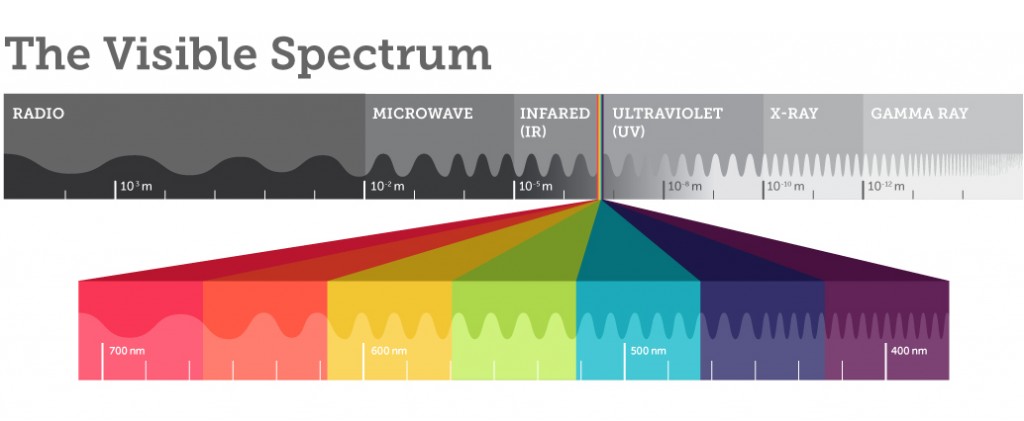When the Invisible Becomes Visible
Bringing the future of imaging into view
Human vision is an amazing thing. The impact and the value of the colors we see anchor our connection to reality…”seeing is believing” is a cliché precisely because it is so fundamental to how most of us interact with the world. But in electromagnetic terms, we see almost nothing. In the video above, Cees Draijer, Senior Program Manager at Teledyne DALSA, talks about the potential of “seeing” beyond the visible spectrum.
Human-visible light is electromagnetic radiation in a band with wavelengths from about 390 nm to 730 nm or so. But the entire electromagnetic spectrum ranges from incredibly high energy gamma rays with wavelengths shorter than picometers (10-12 m) to ultra-low energy radio waves with wavelengths longer than kilometers (103 m). All the colors you’ve ever seen or could see fit into a tiny band that is less than one trillionth of the range that we know exists.

Of course we can already “see” some of those wavelengths by detecting them with various types of technology and converting the information into visible representations. We have x-ray imagers to see inside people and things without “opening” them. We have UV detectors that reveal information otherwise hidden. We have infrared detectors for sensing heat—great for night vision, non-intrusive inspection, and astronomy. Modern astronomy, for example, depends on IR detectors (and radiotelescopes) because the red shift in wavelengths emitted by stars or galaxies receding from us means that their emissions are offset to longer wavelengths. To “see” them, we need to look in nonvisible spectra.
Credit: NASA/Solar Dynamics Observatory
This collage of solar images from NASA’s Solar Dynamics Observatory (SDO) shows how observations of the sun in different wavelengths helps highlight different aspects of the sun’s surface and atmosphere.
Non-visible imaging is already spreading from pure scientific and military applications into many different industries and changing the landscape of imaging:
- Arrays of microbolometers—tiny thermal detectors, are helping bring cost-effective and uncooled IR cameras within reach.
- Hyperspectral imaging over time—hypertemporal imaging—may represent “the toughest, gnarliest, most knee-buckling” high-performance embedded computing (HPEC) challenges in the foreseeable future.
- Multi-spectral 3D imaging allows medical specialists to “see” the veins beneath the skin or the surface of retinas.
- Hyperspectral imaging use in agriculture is essential to aid farmers in making decisions relating to crop health and resource management.
- Hyperspectal imaging is finding its way into food processing facilities.
Just as we constantly seek to improve today’s visible imaging technology to deliver better performance and imagery than those of previous generations, we can seek to improve nonvisible sensor technology. Through research into new semiconductor materials, new architectures, and new techniques, imaging scientists around the world are already developing devices which capture a wider range of spectra, devices which capture multiple narrow bands separately but simultaneously, and devices which capture spectra never detected before. In multispectral terms, the future is “bright” indeed.



 When Can a Semi-Custom Vision System Help?
When Can a Semi-Custom Vision System Help?  Five CMOS Camera Developments to Watch in 2014
Five CMOS Camera Developments to Watch in 2014 